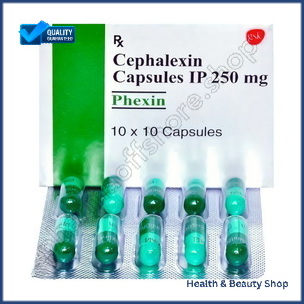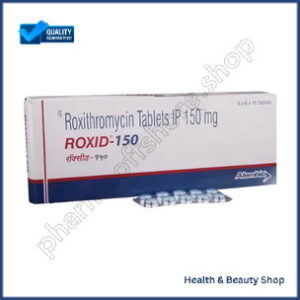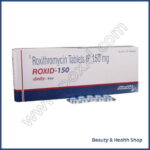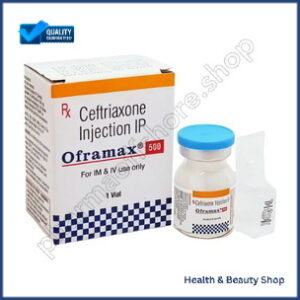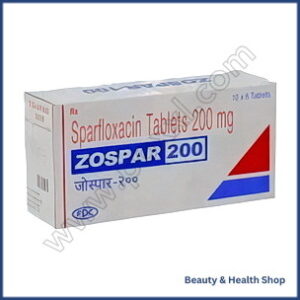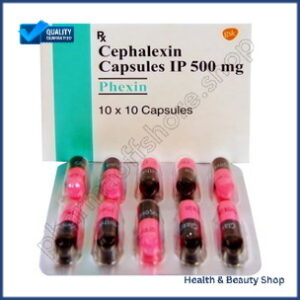ADDICTION
ALCOHOL DEPENDENCE
QUIT SMOKING
ALLERGY
ANTI FUNGAL
FUNGAL INFECTION
FUNGAL NAIL INFECTIONS
ANTI-REJECTION DRUGS
ANTI WORM
ANTIBIOTIC
BACTERIAL INFECTIONS
ARTHRITIS
GOUT
OSTEOARTHRITIS
RHEUMATOID ARTHRITIS
BLOOD
LOW PLATELET COUNT
THROMBOPHLEBITIS
VARICOSE VEINS
COLON
ANAL FISSURE
PILES
ULCERATIVE COLITIS
DIABETES CARE
DIABETES INSIPIDUS
DIABETES TYPE
DIABETIC FOOT ULCERS
GLUCOSE MONITOR
EYES/EAR CARE
DRY EYES
EYE CARE
EYE EXAMINATION
EYE INFECTION
EYE LASHES
EYE PAIN
GLAUCOMA
OCULAR HYPERTENSION
UVEITIS
FEVER CARE
MALARIA
RHEUMATIC FEVER
TYPHOID FEVER
GASTROINTESTINAL
ACIDITY
CONSTIPATION
CROHN'S DISEASE
DIARRHOEA
GALLBLADDER STONES
INTESTINAL ULCERS
IRRITABLE BOWEL SYNDROME
MOTION SICKNESS
NAUSEA
Phexin (Cephalexin)
Phexin 250 mg (Cephalexin)
| Amount | Price | Price / Unit |
Qty | ||
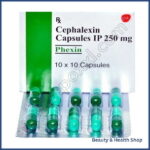
|
30 Capsules | $31.00 | $1.03 |
||

|
60 Capsules | $44.00 | $0.73 |
||

|
90 Capsules | $61.00 | $0.68 |
Phexin 500 mg (Cephalexin)
| Amount | Price | Price / Unit |
Qty | ||
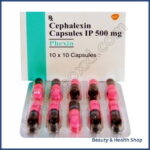
|
30 Capsules | $44.00 | $1.47 |
||

|
60 Capsules | $61.00 | $1.02 |
||

|
90 Capsules | $83.00 | $0.92 |
| Active Ingredient (Generic Name): | Cephalexin |
|---|---|
| Indication: | Bacterial Infections |
| Manufacturer | GlaxoSmithKline Pharmaceuticals Ltd |
| Packaging: | 10 capsules in one strip |
From: $44.00
Phexin, or Cephalexin, is a cephalosporin antibiotic fighting bacterial infections by halting cell wall formation. It treats skin, respiratory, ear, urinary, and bone infections caused by bacteria like Staphylococcus aureus. Take it orally every 6-12 hours, following regular intervals. Complete the full treatment course as prescribed to maximize effectiveness. Caution with probenecid combination, avoid alcohol, report unusual symptoms promptly, and never double doses. Store at room temperature, handle missed doses carefully, and dispose properly. Seek medical help for serious symptoms. Further details on usage, precautions, drug interactions, and storage are crucial for optimal understanding.
If you’re new to Phexin (Cephalexin), understanding its uses and potential side effects is important for safe consumption. Phexin is an antibiotic used to treat various bacterial infections such as respiratory tract infections, skin and soft tissue infections, urinary tract infections, and more. It works by stopping the growth of bacteria. It’s vital to take the medication exactly as prescribed by your healthcare provider and to complete the full course, even if you start feeling better before it’s finished.
Common side effects of Phexin include nausea, vomiting, diarrhea, and stomach pain. It’s crucial to inform your doctor if these side effects persist or worsen. Additionally, Phexin may cause allergic reactions in some individuals, leading to symptoms like rash, itching, swelling, or trouble breathing. If you experience any of these symptoms, seek immediate medical attention.
Remember to disclose your full medical history and any current medications you’re taking to your healthcare provider before starting Phexin to prevent any potential interactions or complications.
Phexin Advantages and Uses
To fully grasp the benefits and applications of Phexin, consider its advantages and uses in combating bacterial infections effectively.
Phexin, also known as Cephalexin, is a cephalosporin antibiotic that works by interfering with the formation of the bacterial cell wall, leading to the eventual death of the bacteria.
This medication is commonly prescribed to treat a wide range of bacterial infections, including skin infections, respiratory tract infections, ear infections, urinary tract infections, and bone infections.
One of the key advantages of Phexin is its effectiveness against various strains of bacteria, making it a versatile choice for healthcare providers.
Additionally, Phexin is usually well-tolerated by patients and has a relatively low incidence of severe side effects.
It’s important to follow your healthcare provider‘s instructions carefully when taking Phexin to ensure maximum results and minimize the risk of antibiotic resistance.
If you experience any concerning symptoms while taking Phexin, be sure to consult your healthcare provider promptly for further evaluation and guidance.
Why is this medication prescribed?
Phexin, also known as Cephalexin, is prescribed by healthcare providers for its effectiveness in combating a wide range of bacterial infections. This antibiotic is commonly used to treat conditions such as respiratory tract infections, skin and soft tissue infections, urinary tract infections, and bone infections.
Your healthcare provider may prescribe Phexin when they suspect a bacterial infection is the cause of your illness. It works by stopping the growth of bacteria, aiding your immune system in fighting off the infection. Phexin is especially helpful in treating infections caused by bacteria such as Staphylococcus aureus, Streptococcus pneumoniae, and Escherichia coli.
It’s important to complete the full course of medication as directed by your healthcare provider to make certain that the infection is entirely eradicated. If you have any concerns or experience side effects while taking Phexin, don’t hesitate to reach out to your healthcare provider for guidance.
How should this medicine be used?
When using this medication, follow the instructions provided by your healthcare provider to guarantee its effectiveness in treating bacterial infections. Phexin (Cephalexin) is usually taken orally with or without food every 6 to 12 hours, depending on the condition being treated. It’s important to take the prescribed dose at evenly spaced intervals to maintain a constant level of the drug in your body. Don’t skip doses or stop taking Phexin early, even if you start to feel better, as this could lead to the infection not being fully treated.
If you miss a dose, take it as soon as you remember. However, if it’s almost time for your next dose, skip the missed dose and continue with your regular dosing schedule. It’s essential to complete the full course of treatment as directed by your healthcare provider, even if your symptoms improve before the medication is finished. If you have any questions or concerns about how to use Phexin, consult your doctor or pharmacist for further guidance.
Other uses for this medicine
Consider consulting with your healthcare provider to explore potential alternative uses for this medication. While Phexin (Cephalexin) is primarily prescribed to treat bacterial infections, there are other conditions it may be used for under the guidance of a healthcare professional. Some alternative uses of Cephalexin include treating skin and soft tissue infections, urinary tract infections, respiratory tract infections, and bone infections caused by susceptible bacteria.
Additionally, Cephalexin may be recommended for the prevention of bacterial endocarditis in certain individuals undergoing dental procedures or surgeries. It’s essential to follow your healthcare provider’s instructions regarding the dosage and duration of treatment for any alternative uses of this medication.
It is important to note that self-medicating with Cephalexin for conditions not approved by a healthcare provider can be harmful and may lead to antibiotic resistance. Always seek medical advice before considering any alternative uses of Phexin to guarantee safe and effective treatment.
What special precautions should I follow?
Before beginning Phexin (Cephalexin), it’s important to check for any potential drug interactions with other medications you’re taking. This precaution helps to prevent any harmful effects or reduced effectiveness of the treatment.
Always consult your healthcare provider or pharmacist to guarantee the safe use of this medication.
Check for Drug Interactions
To ensure your safety and effectiveness of Phexin (Cephalexin) treatment, it’s crucial to be attentive about potential drug interactions. Here are some precautions to keep in mind:
- Notify your healthcare provider about all the medications you’re currently taking, including over-the-counter drugs and supplements.
- Exercise caution when combining Phexin with medications like probenecid, as it may lead to increased side effects.
- Refrain from consuming alcohol while on Phexin treatment, as it may interact adversely with the medication.
- Monitor for any signs of unusual symptoms or reactions after starting Phexin, and inform your doctor promptly.
- If you’re uncertain about any potential interactions, seek guidance from your healthcare provider before making any changes.
What special dietary instructions should I follow?
Following a balanced diet rich in fruits and vegetables is recommended while taking Phexin (Cephalexin) to support your body’s overall health during the treatment. Eating a variety of nutrient-dense foods can help boost your immune system and aid in the effectiveness of the medication.
It’s advisable to avoid excessive consumption of foods high in sugar, saturated fats, and processed foods, as these may counteract the benefits of Phexin. Additionally, it’s important to stay hydrated by drinking an adequate amount of water throughout the day to help flush out toxins and maintain proper kidney function.
Some foods, like dairy products, may interact with antibiotics like Cephalexin, so it’s best to consult your healthcare provider or pharmacist for personalized dietary advice. Overall, focusing on a healthy and well-rounded diet can complement the treatment process and promote your overall well-being while taking Phexin.
What should I do if I forget a dose?
In case you forget a dose of Phexin (Cephalexin), it’s important to take it as soon as you remember, unless it’s almost time for your next scheduled dose. If you realize you missed a dose close to the time for the next one, don’t double up on your next dose to make up for the missed one. Simply skip the missed dose and continue with your regular dosing schedule. Taking extra doses could lead to an overdose, increasing the risk of side effects.
To help you remember to take your medication on time, you may find it useful to set an alarm or reminder on your phone or place the medication in a visible spot where you’re likely to see it. If you frequently forget doses, consider using a pill organizer to help you keep track of your daily medication intake. Consistency in taking your prescribed dose of Phexin is vital for the medication to be effective in treating your infection.
What side effects can this medication cause?
Phexin (Cephalexin) may cause persistent or worsening side effects, some of which can be serious.
If you notice any of the following symptoms, such as severe skin rash, difficulty breathing, or persistent diarrhea, contact your doctor immediately.
Being aware of potential side effects and seeking prompt medical advice can help guarantee your well-being while taking this medication.
Persistent or Worsening Side Effects
If you experience persistent or worsening side effects while taking Phexin (Cephalexin), it’s important to notify your healthcare provider immediately. Some side effects you may encounter include:
- Diarrhea: This is a common side effect that may occur during treatment.
- Nausea or Vomiting: You may feel nauseous or experience vomiting.
- Rash: Some individuals may develop a skin rash while taking Phexin.
- Headache: Headaches can occasionally occur as a side effect.
- Fatigue: Feeling tired or experiencing fatigue may also be reported.
It is essential to keep your healthcare provider informed about any side effects you encounter to ensure proper management and adjustment of your treatment plan.
Some side effects can be serious. If you experience any of the following symptoms, call your doctor immediately:
Experiencing certain side effects while taking this medication may indicate a need for immediate medical attention. If you encounter any of the following symptoms, contact your doctor promptly:
- Severe skin rash or hives
- Difficulty breathing or swallowing
- Swelling of the face, throat, or tongue
- Persistent diarrhea or abdominal pain
- Jaundice (yellowing of the skin or eyes)
These signs could suggest a serious reaction to Phexin (Cephalexin) that requires urgent medical evaluation.
It’s vital to seek medical help if you notice any of these symptoms to ensure prompt assessment and appropriate management of any potential complications. Your health care provider can provide guidance on the best course of action to address these serious side effects.
What should I know about the storage and disposal of this medication?
When storing Cephalexin, make sure to keep it in a cool, dry place away from moisture and heat. It’s important to store this medication at room temperature between 68-77 degrees Fahrenheit. Avoid storing it in the bathroom or kitchen where there may be humidity or temperature fluctuations. Keep the medication tightly closed in its original container to protect it from light and moisture. Don’t store Cephalexin in the refrigerator unless instructed to do so by your pharmacist or healthcare provider.
When it comes to disposing of Cephalexin, it’s recommended to follow specific guidelines to guarantee safe and proper disposal. Don’t flush this medication down the toilet unless instructed to do so. Instead, consult your local pharmacy or healthcare facility to inquire about medication take-back programs in your area. If no take-back programs are available, you can dispose of Cephalexin by mixing it with an unpalatable substance like kitty litter or coffee grounds in a sealed plastic bag before throwing it in the trash. It’s essential to remove any personal information from the medication packaging before disposal.
In case of an emergency/overdose
In an emergency or overdose situation involving Phexin (Cephalexin), promptly seek medical assistance. If you suspect an overdose, contact your local poison control center or emergency room immediately. Symptoms of an overdose may include severe nausea, vomiting, diarrhea, and abdominal pain. It’s important to provide healthcare professionals with as much information as possible, including the amount of medication ingested and the time of ingestion.
Do not attempt to induce vomiting unless instructed by medical personnel. In case of an emergency, call 911 or your local emergency services for immediate help. Keep the medication packaging with you to provide necessary details to healthcare providers. Be prepared to answer questions regarding the patient’s age, weight, underlying health conditions, and the specific symptoms experienced.
It is vital to act swiftly in cases of overdose to prevent potential complications. Don’t delay seeking medical help, as prompt treatment can be critical in managing the situation effectively.
What other information should I know?
Make sure to inform your healthcare provider about any allergies or previous adverse reactions to antibiotics before taking Phexin (Cephalexin). It’s important to disclose this information to guarantee your safety and avoid any potential complications. Additionally, let your doctor know about any other medications, supplements, or herbal products you’re currently taking, as they could interact with Phexin and impact its efficacy.
During your Phexin treatment, it’s vital to complete the full course as prescribed by your healthcare provider, even if your symptoms improve before finishing the medication. Stopping the medication prematurely can result in the return of the infection or the development of antibiotic resistance.
While taking Phexin, drink plenty of fluids to help prevent potential side effects like stomach upset. If you experience severe or persistent diarrhea, abdominal pain, or any other concerning symptoms, contact your healthcare provider immediately. It’s crucial to follow your doctor’s instructions carefully and attend all follow-up appointments to monitor your progress and ensure the effectiveness of the treatment.
Brand names
Consider referencing Phexin by its brand names to guarantee you are using the correct medication. Below, you can find a table listing some of the common brand names under which Cephalexin is marketed:
| Brand Name | Manufacturer |
|---|---|
| Keflex | Eli Lilly |
| Rilexine | Virbac |
| Sporidex | Ranbaxy |
| Cefanex | Dexa Medica |
| Ceporex | GlaxoSmithKline |
When discussing or purchasing Cephalexin, you may come across these brand names. It’s essential to mention that regardless of the brand name, the active ingredient in all these medications is Cephalexin. Always consult your healthcare provider to confirm you are taking the correct medication under any of these brand names. Familiarizing yourself with these brand names can assist in recognizing Cephalexin products both in medical settings and pharmacies.
Purchase Locations
When looking to purchase Phexin (Cephalexin), explore various pharmacies and online retailers for availability. Pharmacies such as CVS, Walgreens, and Rite Aid often carry this medication in stock. It’s advisable to contact these pharmacies beforehand to confirm they’ve Phexin available and to inquire about pricing.
Additionally, online retailers like Amazon, HealthWarehouse, and 1mg offer the convenience of ordering from the comfort of your home. When purchasing online, be sure to check the reputation of the retailer to guarantee the authenticity and quality of the product. Some online pharmacies may even offer discounts or promotions that could make buying Phexin more cost-effective. Remember to verify the legitimacy of the online pharmacy by checking for licensing information and customer reviews.
To summarise
To conclude the discussion on purchase locations for Phexin (Cephalexin), it’s vital to compare prices, availability, and delivery options between brick-and-mortar pharmacies and online merchants.
Physical pharmacies offer the advantage of immediate access to the medication, allowing you to interact directly with a pharmacist for any questions or concerns. However, they may have limited stock, leading to potential delays in obtaining Phexin.
On the contrary, online retailers often provide a broader selection and competitive pricing. You can conveniently order from the comfort of your home and have the medication delivered to your doorstep. It’s crucial to evaluate factors such as shipping costs, delivery times, and the reliability of the online store when making your decision.


